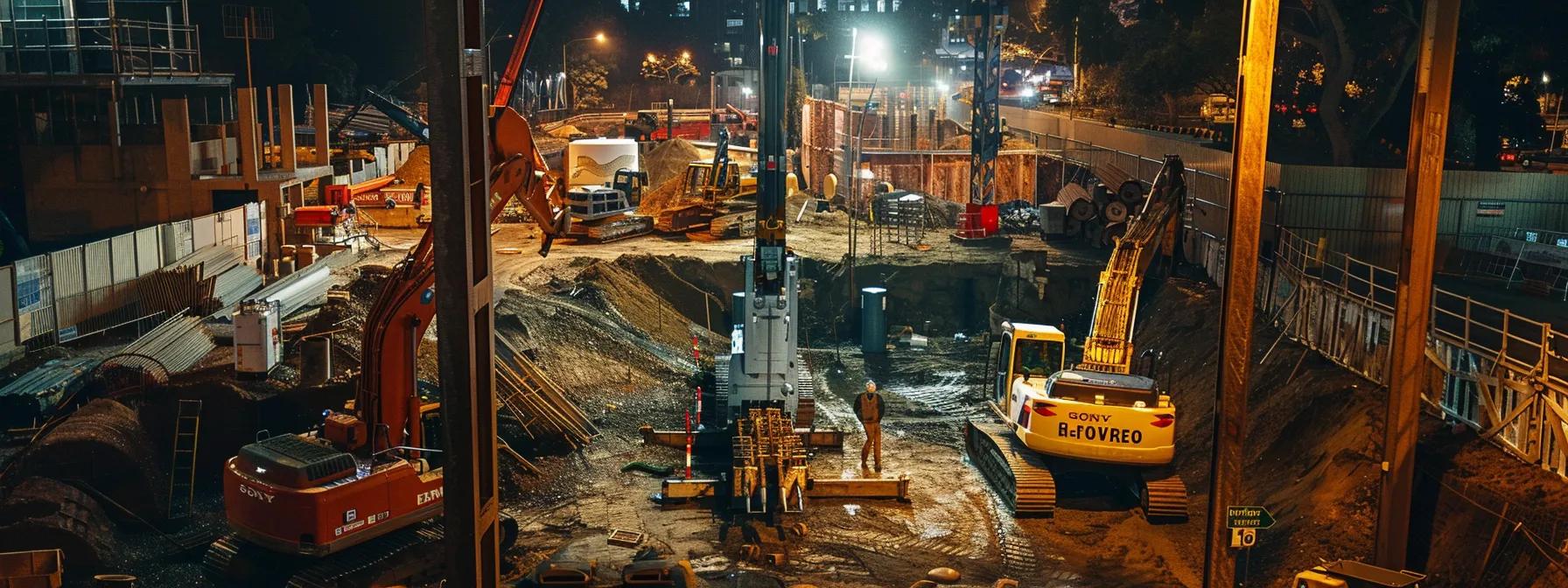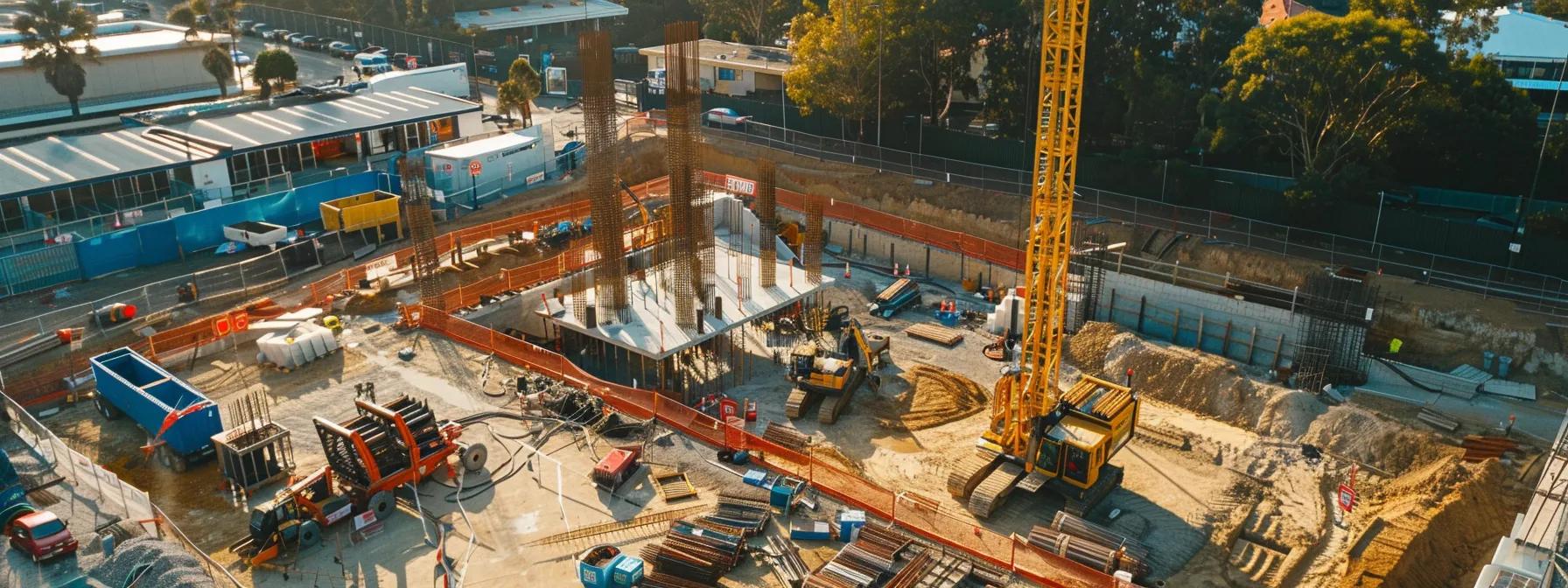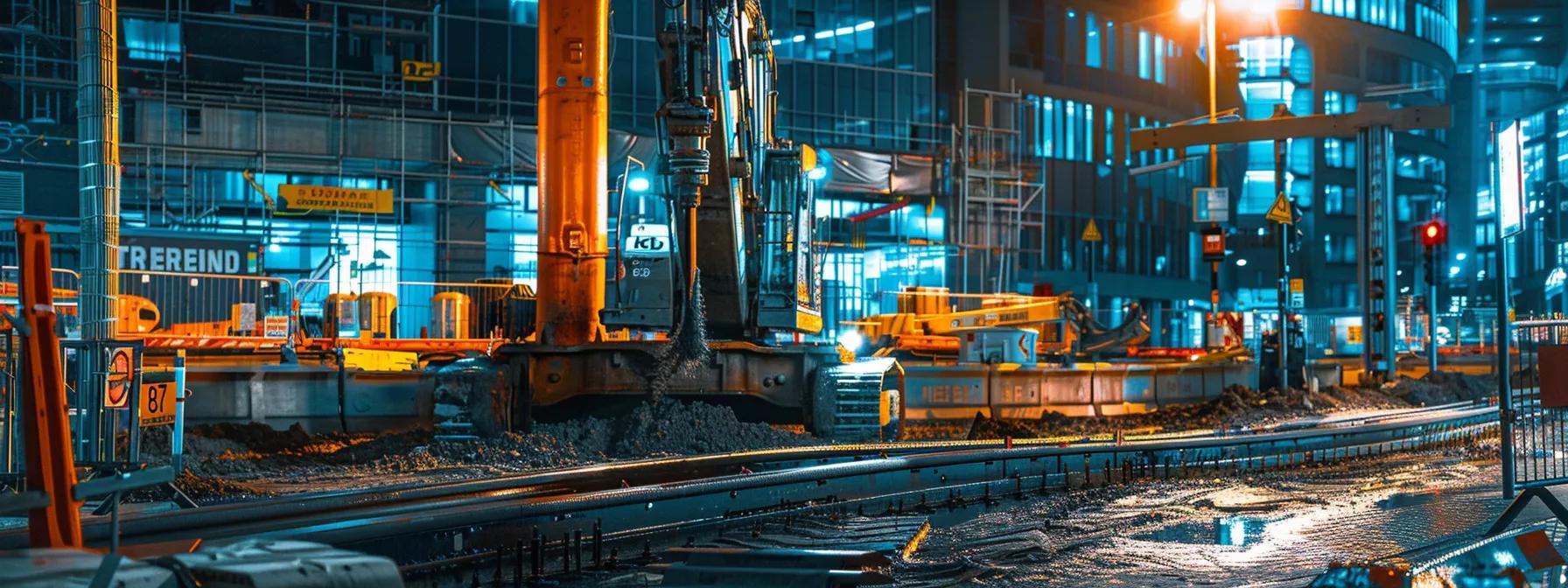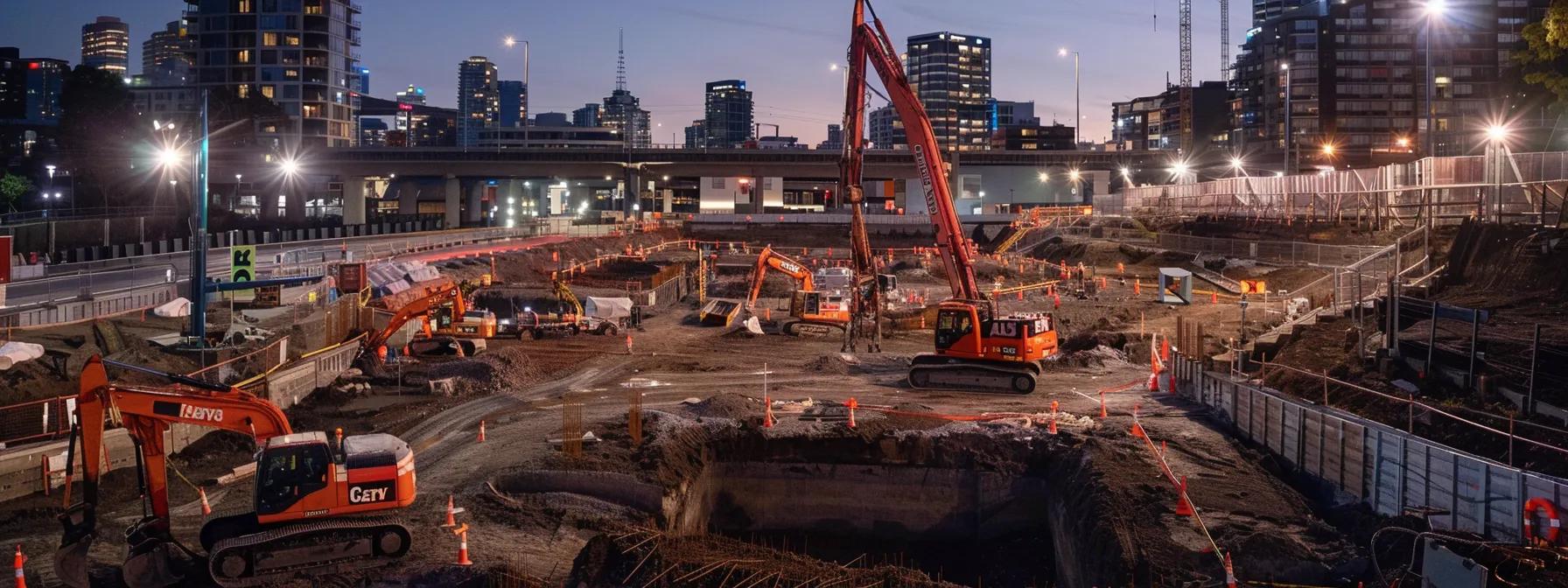
Get Accurate, Non-Invasive Directional Boring in Belmore With Clearwater
Clearwater Plumbing and Civil provides expert directional boring services in Belmore, offering non-invasive solutions to install underground utilities with minimal disruption. With over 10 years of experience across New South Wales, Clearwater is a professional and reliable provider. Their directional boring services use advanced drilling rigs to install telecommunications pipelines, water and sewer lines, electrical and gas cables beneath roads and infrastructure without disruptive excavation. This article explains what directional boring is, how it works, and why Clearwater is the ideal partner in Belmore. It outlines benefits such as reduced environmental impact and lower costs, and answers common questions about project timelines, pricing, and safety. The discussion is organised through clearly defined headers to help both residential and commercial clients understand Clearwater’s capabilities. As the industry demands sustainable and minimally invasive practices, directional boring offers a fast, efficient alternative. Read on to discover how Clearwater uses innovative technology, strict safety measures, and local expertise to support infrastructure development in Belmore and its surroundings.
What Is Directional Boring and How Does It Work in Belmore?
Directional boring, also called horizontal directional drilling (HDD), is a trenchless method for installing subterranean utilities with minimal surface disruption. The process uses a drilling rig to create a precise horizontal borehole using guided drilling technology that navigates under roads, rivers, and other obstacles. It starts with a pilot hole drilled along a predetermined path, followed by reaming to enlarge the hole, and ends with pulling the pipeline or duct into place. Integrated computer tracking and steering ensure the borehole meets engineering specifications.
What Is Directional Boring or Horizontal Directional Drilling (HDD)?
Directional boring (HDD) installs underground utilities without full trench excavation. Drills use a steerable head and drill bit to follow a preset route beneath the surface. This method is especially useful in congested urban areas or environmentally sensitive zones where open-cut excavation is impractical. HDD creates only small entry and exit pits, preserving existing landscaping and infrastructure.
How Does the Directional Boring Process Minimise Disruption?
By avoiding large-scale excavation, directional boring eliminates the need for massive soil removal and reduces road and landscape disruption. Only small launch and reception pits are created, lowering noise, dust, local traffic interruptions, and damage to existing utilities. This minimal disturbance shortens project duration, lowers restoration costs, and minimises environmental impact.
Which Equipment Does Clearwater Use for Directional Boring?
Clearwater uses advanced, electronically controlled drilling rigs equipped with custom-designed drill bits and high-performance reaming tools integrated with computer guidance. These machines handle various soil types from soft clays to rocky substrates. Additionally, specialised vacuum trucks and support vehicles are used to clear drilled material and manage drilling fluids efficiently. This modern equipment ensures precise, fast, and safe execution.
What Types of Underground Utilities Can Be Installed Using Directional Boring?
Directional boring is versatile and can install water and sewer pipelines, natural gas lines, telecommunications cables, electrical conduits, and increasingly fibre optic cables. It is also used for irrigation and stormwater drainage. By using HDD, Clearwater installs these utilities without damaging the landscape or interrupting existing services.
Why Choose Clearwater for Directional Boring Services in Belmore?

Choosing Clearwater in Belmore means benefiting from over a decade of local experience, advanced equipment, and a strong commitment to safety and client satisfaction. Their deep understanding of local soil and regulatory conditions ensures projects are completed on time and within budget, with minimal environmental impact.
How Does Clearwater Ensure Accuracy in Directional Boring Projects?
Clearwater uses state-of-the-art electronic guidance and tracking systems to maintain strict adherence to approved paths and design specifications. Regular equipment calibration, real-time monitoring, and thorough pre-project surveys ensure every borehole is correctly aligned and meets engineering standards.
What Are the Benefits of Clearwater’s Non-Invasive Boring Techniques?
Clearwater’s non-invasive techniques protect surface structures, utilities, and landscapes, reducing costly site restoration. The rapid pace of HDD minimises disruption to local traffic and daily activities. These methods also contribute to sustainable development by lowering noise, dust, and overall environmental impact.
What Local Expertise Does Clearwater Bring to Belmore Projects?
With extensive regional experience, Clearwater understands local soil conditions, weather patterns, and regulatory requirements. Their good working relationships with local authorities streamline permit processes and ensure compliance, making projects efficient and reliable.
How Does Clearwater Maintain Safety and Compliance During Boring?
Safety is central to Clearwater’s operations. Strict adherence to industry protocols, regular staff training, and routine equipment checks ensure safe operation. Comprehensive environmental management plans with risk assessments and contingency procedures further protect workers and the public.
What Are the Key Benefits of Non-Invasive Directional Boring in Belmore?
Non-invasive directional boring offers advantages, especially in urban or sensitive areas. It minimises surface disruption, leading to faster project completions and lower repair costs. The high precision of HDD ensures structurally sound installations that align well with future infrastructure needs, reducing long-term maintenance issues. Moreover, the technique improves safety by eliminating large-scale excavation work.
How Does Non-Invasive Boring Protect Existing Infrastructure?
Because HDD uses precise tracking and controlled drilling, it avoids damaging nearby utilities, foundations, or roads. The creation of only small entry and exit pits leaves surface assets largely undisturbed, thereby reducing the risk of service interruptions and expensive repairs.
What Environmental Advantages Does Directional Boring Offer?
This method significantly reduces soil disruption and waste by avoiding large-scale trenching. It lessens erosion, sediment runoff, and the overall ecological impact. Lower noise, dust, and vibrations help protect local wildlife and communities, supporting sustainable construction practices.
How Does Directional Boring Save Time and Reduce Costs Compared to Traditional Methods?
Directional boring reduces the need for extensive site preparation and restoration, lowering labour, material, and remediation costs. Its precision minimises costly rework and delays. Faster project completion means less downtime and lower disruption, making HDD an economically attractive alternative.
What Are Common Use Cases for Non-Invasive Directional Boring in Belmore?
Common projects include installing telecommunications infrastructure, water and sewer lines, electrical cables, natural gas pipelines, and stormwater drainage systems. HDD is especially valued when crossing roads, railways, or sensitive areas, and it is used in commercial retrofits where minimal disruption is crucial.
How Much Does Directional Boring Cost in Belmore With Clearwater?

Costs vary based on project size, soil conditions, depth requirements, and the utility type. Generally, directional boring is competitively priced because its efficiency minimises indirect costs like traffic management and site restoration. Clearwater offers transparent pricing models that detail cost per metre and other fees, helping clients understand their investment clearly.
What Factors Influence the Cost of Directional Boring Projects?
Costs depend on borehole length and depth, soil composition, local fees, and the complexity of the installation route. Special challenges like crossing existing infrastructure may increase the price. Detailed project assessments and advanced surveying help ensure cost efficiency.
How Does Clearwater Provide Competitive and Transparent Pricing?
Clearwater provides detailed quotes based on accurate field measurements and thorough project specifications. Clients receive a breakdown of equipment, labour, materials, and permits, eliminating unexpected charges. Regular cost reviews and open communication help maintain fair pricing.
Are There Cost Savings From Using Non-Invasive Directional Boring?
Yes, significant savings are achieved by reducing excavation and restoration work. Shorter project timelines further decrease downtime and overall disruption, leading to financial benefits alongside environmental and safety advantages.
How Can Customers Request a Free Directional Boring Quote From Clearwater?
Clients in Belmore can request a free quote by contacting Clearwater via phone or their online enquiry form. An on-site assessment is scheduled, and a detailed, transparent estimate is provided with no obligation, making planning and budgeting straightforward.
What Are Common Questions About Directional Boring in Belmore?
Directional boring raises common questions about project timelines, safety, and site impact. Clients often ask about completion times, effects on nearby properties, and measures to minimise disruptions. Clearwater’s expert team provides clear answers to help clients understand the method’s benefits and limitations.
What Is the Typical Timeline for a Directional Boring Project?
Project timelines depend on borehole length, soil type, and utility complexity. Typically, small to medium projects are completed in one to three days, including preparation and restoration. Larger or more challenging projects may take longer, with precise timelines provided after a detailed assessment.
How Does Directional Boring Compare to Traditional Trenching Methods?
Unlike traditional trenching, HDD minimises surface disruption, reduces restoration costs, and is faster and more precise. Traditional excavation often requires longer durations, higher labour, and extensive repair work, whereas HDD achieves efficient results with less environmental impact.
Is Directional Boring Safe for Residential and Commercial Properties?
When performed by experienced professionals like Clearwater, directional boring is very safe. Its precision lowers the risk of damaging structures or utilities. Strict safety protocols, continuous monitoring, and advanced equipment ensure that both residential and commercial projects are executed securely.
How Can Customers Prepare Their Property for Directional Boring?
Before the project, clients should ensure that entry and exit sites are accessible and clear of obstructions. This may involve relocating vehicles or outdoor furniture and notifying neighbours. Clearwater provides clear guidance and conducts pre-project surveys to streamline the process.
Where Does Clearwater Provide Directional Boring Services in and Around Belmore?

Clearwater’s services extend beyond Belmore to surrounding suburbs and strategic regional areas, supporting widespread infrastructure development. Clients in nearby districts benefit from the same non-invasive techniques, ensuring consistent service quality and outcomes. Local government bodies, commercial enterprises, and residential developments all rely on Clearwater for timely support.
Which Surrounding Suburbs and Areas Are Covered by Clearwater?
Clearwater’s extensive network covers areas including Canterbury, Hurlstone Park, and Marrickville, among others. These regions benefit from rapid turnaround times and consistently high project standards, facilitating urban renewal and utility upgrades.
How Does Clearwater Support Local Infrastructure Development in Belmore?
Clearwater aids local infrastructure by installing essential utilities without road closures or significant surface disruption. Their work in upgrading telecommunications, water, and sewer systems helps local councils meet tight deadlines and regulatory demands, ensuring communities continue to grow seamlessly.
What Are Recent Directional Boring Projects Completed by Clearwater in Belmore?
Recent projects include installing fibre optic cables under busy streets and renewing aging water pipelines in commercial zones. These projects were completed ahead of schedule and within budget, showcasing Clearwater’s efficient, precise, and cost-effective methods.
How Can Customers Contact Clearwater for Directional Boring Services in Belmore?
Clients can contact Clearwater via direct phone consultations, online enquiry forms, or in-person assessments to discuss project requirements. Their responsive customer support ensures all queries are answered before work begins, tailoring each project to site-specific needs.
How Does Directional Boring Support Fibre Optic and Utility Installations in Belmore?
Directional boring is key for installing fibre optic cables and other utility lines in urban infrastructure projects. The method creates precise, minimally invasive boreholes that protect communication lines and utility networks from surface disruptions while ensuring reliable performance.
Why Is Directional Boring Ideal for Fibre Optic Cable Installation?
The technique provides precise cable placement under busy roads and urban landscapes while minimising traffic disruption. A smooth, continuous borehole protects fibre optic cables from mechanical stress and environmental damage, ensuring reliable, high-speed data connectivity.
How Does Directional Boring Facilitate Water and Sewer Line Installation?
For water and sewer lines, HDD ensures pipelines are installed at correct depths and gradients to prevent leaks and ensure proper flow. With only small access pits created, disruption to traffic and the environment is minimal, protecting existing utilities.
What Are the Advantages of Using Directional Boring for Gas and Electrical Lines?
Directional boring installs gas and electrical lines under homes, roads, or commercial properties without interruption. Its controlled drilling process reduces the risk of damaging other infrastructure and results in lower installation costs and quicker project completion.
How Does Clearwater Customise Directional Boring Solutions for Different Utilities?
Clearwater tailors its approach to each utility type. For fibre optic cables, the drill path is optimised for minimal bends and smooth operation. For water and sewer lines, achieving the correct slope and depth is prioritised. Customised drilling fluids and reaming tools are selected based on soil conditions, ensuring every installation meets the highest standards.
| Utility Type | Critical Requirement | Clearwater’s Approach | Key Benefit |
|---|---|---|---|
| Fibre Optic Cable | Minimal bends, smooth borehole | Precision directional drilling | Enhanced data transfer and protection |
| Water & Sewer Lines | Accurate slope and depth | Controlled boring and reaming methods | Efficient flow and reduced leaks |
| Gas Lines | Safety, minimal disruption | Advanced guidance and monitoring | Reduced risk of accidents |
| Electrical Lines | Secure installation, alignment | Customised drilling fluids | Stable and long-term performance |
| Telecommunications | High-quality signal protection | High-resolution tracking systems | Reliable and fast connectivity |
The table summarises how Clearwater’s directional boring methods cater to the specific needs of various utility installations, highlighting the benefits of each tailored approach.
Frequently Asked Questions
Q: What is the main advantage of using directional boring over traditional trenching? A: Directional boring minimises surface disruption by requiring only small entry and exit pits, reducing environmental impact, excavation costs, and the risk of damaging existing infrastructure.
Q: How long does a typical directional boring project take? A: Most small to medium projects are completed in one to three days, though larger or more complex projects may take longer. Detailed timelines are provided after a project assessment.
Q: Are there safety concerns associated with directional boring in urban areas? A: When performed by professionals like Clearwater, directional boring is very safe due to strict safety protocols, continuous monitoring, and advanced equipment that minimises risks.
Q: How does Clearwater ensure the quality and precision of its drilling operations? A: Using computer-guided rigs, real-time monitoring, regular equipment calibration, and thorough pre-project surveys, Clearwater ensures each borehole is drilled accurately along the intended path.
Q: Can directional boring be used for installing multiple types of utilities simultaneously? A: Yes. The technique is versatile and can efficiently install fibre optic cables, water and sewer lines, gas pipelines, and electrical conduits, with Clearwater tailoring its approach for each utility.
Q: What preparation is needed from the client’s side before a directional boring project begins? A: Clients should clear the designated entry and exit areas of obstructions. Clearwater provides guidelines and conducts surveys to ensure a smooth project with minimal disruption.
Q: How can I request a free quote for a directional boring project? A: Contact Clearwater directly via phone or their online enquiry form. An on-site assessment is conducted, and a detailed, transparent quote is provided with no obligation.
Final Thoughts
Clearwater’s directional boring services in Belmore represent a significant improvement over traditional construction methods. This non-invasive technique offers precision, cost-effectiveness, and reduced environmental impact—all essential in today’s urban infrastructure projects. Clients experience less disruption, quicker project completion, and customised solutions for a range of utility installations, from fibre optic cables to water and sewer systems. With a strong emphasis on safety, local expertise, and transparent pricing, Clearwater is a leader in directional boring, consistently exceeding client expectations and setting new industry standards.

